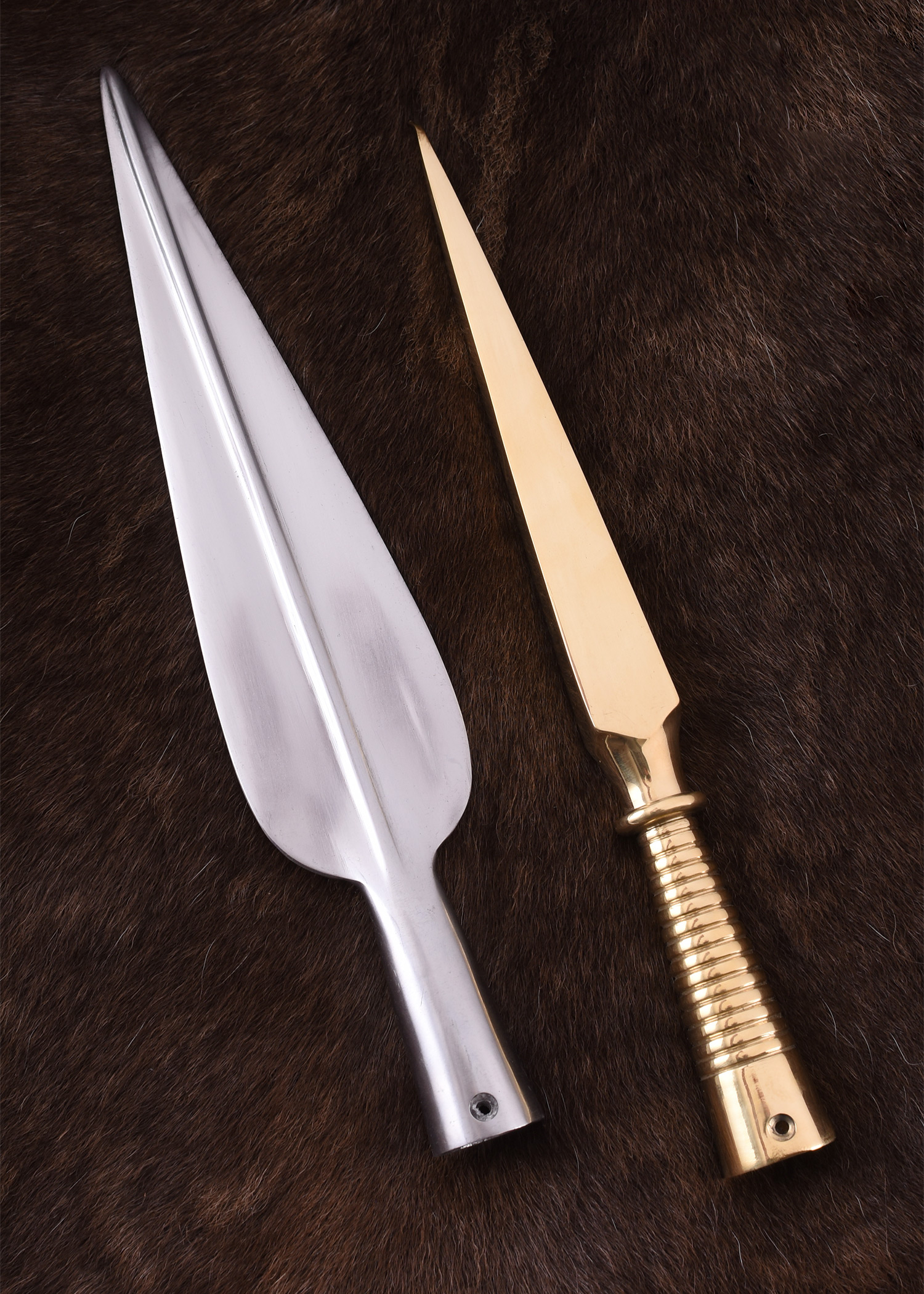
The title of hoplite was thus one of some minor prestige, and carried with it some additional political rights. The hoplite's short sword was typically considered to be a sort of weapon of last resort.Įach hoplite was responsible for the purchase and upkeep of his own armor, and so membership in the hoplite phalanx was restricted to those who could afford the expense. The butt-spike was useful as a secondary weapon for dispatching trampled-upon foes, or as a primary weapon after the spear shattered, as it usually did, upon impact. There is some doubt as to whether it was held underhand or above the shoulder. Eight feet long, it was capped with an iron spearhead on one end, and a bronze butt-spike on the other. The phalanx is recognized by its bristle of spears, and the spear was indeed the principal offensive weapon of the hoplite. In particular, the helmet (always the soldier's least favorite bit of equipment, then as now) was frequently tilted far back on his head when the soldier was not in combat. The rest of the armor was made of thick bronze plate, and was so heavy that the soldiers would not don their armor until the moments before the charge began. The shield was large enough to protect the right side of the man to each soldier's left, and so formed a wall behind which the hoplite was protected. It was a large concave piece of wood, rested on the left shoulder, and stretching down to the soldier's knees. The hoplite's shield was his defining piece of equipment, even lending its name, hoplon, to the soldier himself. All this on a soldier who himself probably weighed no more than 150 pounds. The hoplite's armor-the panoply-consisted of a shield, helmet, breastplate, greaves (plate armor worn around the lower leg), sword, spear, and tunic, and weighed about seventy pounds. Made up of middle-class men who had day jobs, the phalanx was made to decide a war in a single bloody struggle. The hoplite phalanx was the perfect manifestation of classical Greek society on the battlefield. Their concave nature offered substantial protection, but made the use of weapons somewhat difficult as it restricted arm movement.Men wear their helmets and their breastplates for their own needs, but they carry shields for the men of the entire line. Early oval scuta evolved into the rectangular, semi-cylindrical versions, which were used by the foot soldiers of the early Empire to great effect. The most famous of the Roman shields, great scuta were large and either rectangular or oval. Roman shields also featured a boss or umbo, a thick, round, wooden or metal protrusion that deflected blows and served as a place to mount the grip.

Some Roman shields were strengthened by plating their edges with a copper alloy, though this was eventually abandoned in favour of using stitched rawhide, which bound the shields more effectively. Many shields were based on Greek aspis or hoplon, which were round and deeply concave like a dish.Īspides were wooden and sometimes plated with bronze.


The shapes and styles of Roman shields differed according to use and timeframe. Roman soldiers or legionaires were well protected by leather and iron armour, helmets and shields, called scuta. Early shields were typically constructed of wood and animal hide and later reinforced with metal.

A logical evolution in armed combat, shields were used to block attacks from hand-held weapons like swords as well as projectile weapons such as arrows. The use of shields in battle originates in pre-history and is present in the earliest known human civilisations.


 0 kommentar(er)
0 kommentar(er)
